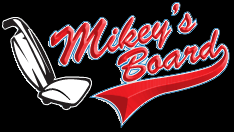Short answer is an oxidizer that is safe for the surface being cleaned (Boost All, Liqui-Zone, hydrogen peroxide), cleaning an encapsulating deodorizer (Hydrocide Xtreme) and ventilation.
Here is the long version -
Skunk Season
Depending on the climate in your area, you are likely already into skunk season, the time of year when skunks can be found roaming around the suburbs, taking up dwelling in crawl spaces and occasionally tangling with dogs, people and your customer's homes.
Skunks do not hibernate, but they do tend to go into a dormant state during the winter, especially in colder climates. They make or find a warm den they share with other skunks to keep warm until early spring.
Spring is the start of mating season - this may be anywhere from mid-march to mid-April depending upon where you are located. Males spend this time roaming in search of females. Once mated, the females have about a 2 month gestation period before the young are born in mid-May to early June. During this period, they look for a warm place to stay. Crawl spaces can be a convenient nesting spot.
The young stay with the females for up to 1 year. The females are very protective when accompanied by their kits. So encounters with dogs or people can have memorable consequences.
Many home remedies exist, but few work well. The exception would be a hydrogen peroxide mixture known as Krebaum's formula. This can be used on some surfaces but will damage others.
If one of your client's calls for help with a skunk odor problem, be sure they also check with their insurance agent. Home-owners policies may provide coverage.
Here are some additional details plus suggestions on how to deal with these unpleasant, penetrating odors, including how to mix and use Krebaum's formula.
Skunk odor is caused by a highly odorous oily secretion that the skunk uses as a defense mechanism. The odor comes from sulfur compounds known as thiols (formerly called mercaptans) and thioacetate derivatives of these thiols. Different species of skunk produce slightly different variations of these compounds. The odor of thiols can be detected in concentrations as low as 10 - 20 parts per trillion!
In order to neutralize the odor of skunk spray, the chemicals in the secretion must be changed to a different type of molecule that does not produce an odor. Oxidizing the thiols forms odorless sulfonic acid. Hydrogen peroxide and chlorine bleach can be used as the oxidizers. Ozone is another powerful oxidizer that is appropriate in some situations.
There is no single remedy for skunk odor. Depending on the surfaces affected, it may require a variety of methods and several steps to remove the odor completely. The type of surface you are dealing with will determine the procedure and chemicals that you use in removing skunk odor. Not all recommendations are safe on all fabrics or surfaces. Chose the products and methods suitable for the fabrics you are deodorizing.
Ventilate the area well before during and after the deodorization process.
PROCEDURE
Textiles
STEP 1
Remove sources of odor. Items of low value such as some used clothing, old blankets, camping gear, etc. are more easily replaced than restored. If appropriate for the fabric, clothing can be soak in a solution of 1 cup of chlorine bleach per gallon of water then laundered.
STEP 2
Apply a saturation spray of
Bridgepoint Hydrocide or
Hydrocide Xtreme diluted according to label directions.
STEP 3
Clean carpet or upholstery considering the fiber and construction. If the material received a direct or strong application of skunk spray, boost your prespray with 1 ounce of Bridgepoint’s
Citrus Solv and 1 ounce of
Boost All per gallon of water.
Boost All is a great oxidizer. It can also be added to your rinse water if needed.
STEP 4
Repeat step 2 if required. Rinse.
NOTE
Some items may need to be treated with ozone which is a strong oxidizer. This is best accomplished in the controlled environment of an ozone chamber rather than on location.
Hard Surfaces
STEP 1
Apply a solution of chlorine bleach diluted at one cup per gallon of water to the contaminated area. This can be wiped on or sprayed. Pre-test in an inconspicuous area first. Bleach is harmful to some surfaces and may cause corrosion or color loss.
For some surfaces you may elect to use what is known as Krebaum’s formula - One qt. of 3% hydrogen peroxide, ¼ cup baking soda and a spoonful of liquid detergent. This can be boosted this with 4 ounces of
Hydrocide or
Hydrocide Xtreme.
Krebaum’s formula is usually appropriate for unfinished surfaces in a crawl space such as cement block walls, floor joists and underside of subfloor
STEP 2
Rinse with clear water. You may rinse and extract with a hard surface tool, where practical.
NOTE – It may be beneficial to install a dry vapor deodorization system such as the Vapor Shark by
Vaportek in the area you are deodorizing. This can be installed at the start of a project to begin knocking down odor immediately and to make the environment more pleasant for you and your crew. This provides an immediate pleasant fragrance and helps to eliminate odors in the air space. Use the 3X Industrial cartridge or membrane. Another option is to use a Hot / thermal Fogger.
Scott Warrington

